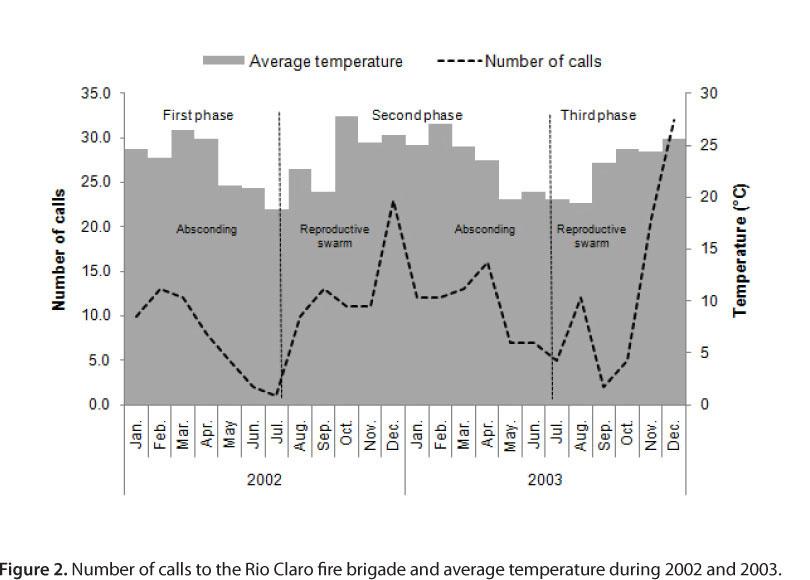The presence of bees (Apis mellifera L.) in urban areas has increased in recent years due to environmental disturbances caused by humans. Bee migration to cities may provoke serious accidents, since some people present allergic reactions to their venoms. In Rio Claro city, São Paulo state, Brazil, the number of calls to the fire brigade for removal of bee swarms, and the number admissions in local hospitals due to bee stings were investigated during 2002 and 2003, and a correlation between these data and the average temperature, rainfall and relative humidity was found. The study period was divided into three phases according to the number of times that the fire brigade was called to remove swarms (263 times): January to July 2002 - 51 calls (19.39%); August 2002 to July 2003 - 140 calls (53.23%); and August to December 2003 - 72 calls (27.38%). A significant correlation among the number of calls, the local temperature and rainfall was detected. The number of accidents was not associated with environmental variables. Based on the current results, public activities for prevention of bee attacks may be developed to avoid unwanted contact between humans and these insects, and/or provide the appropriate management of the colonies.
synanthropism; reproductive swarms; absconding; environmental variables; honeybees




